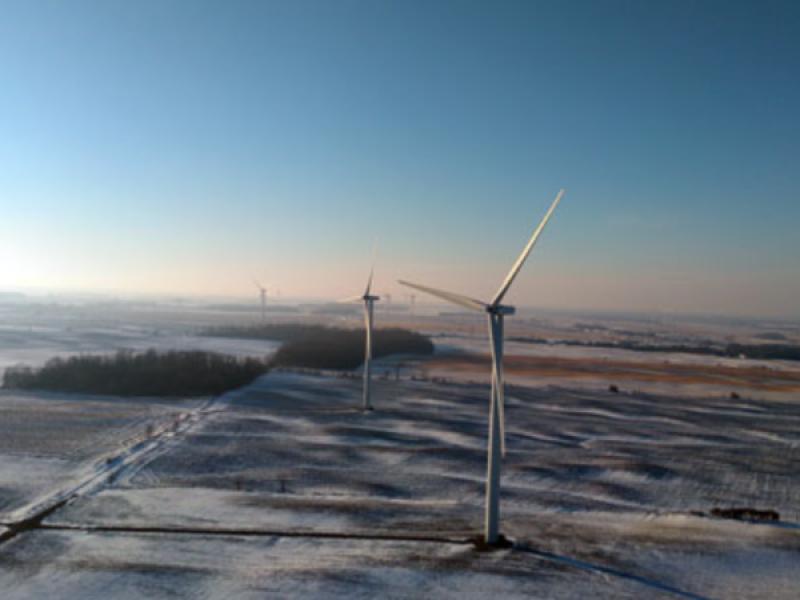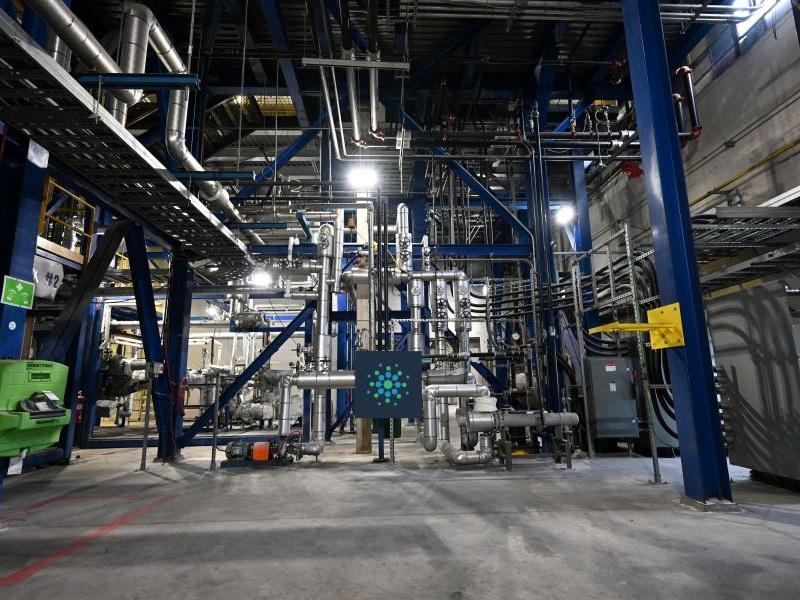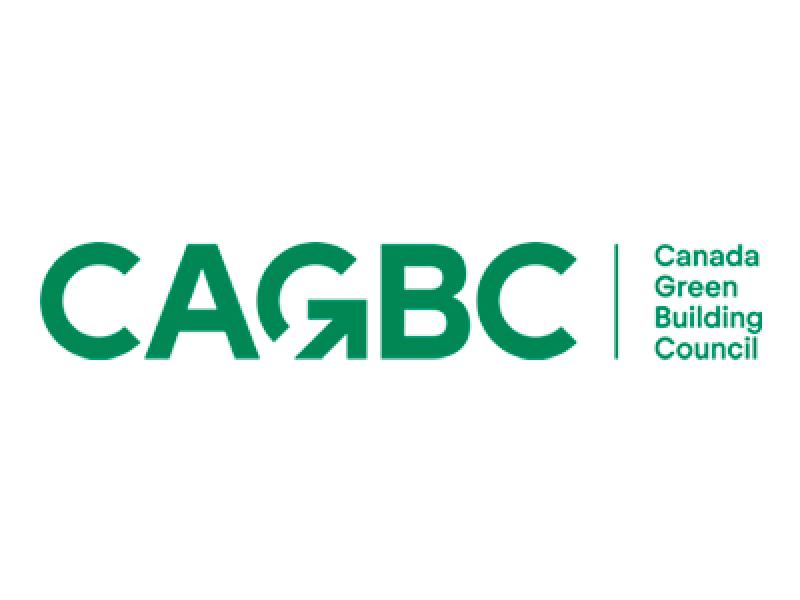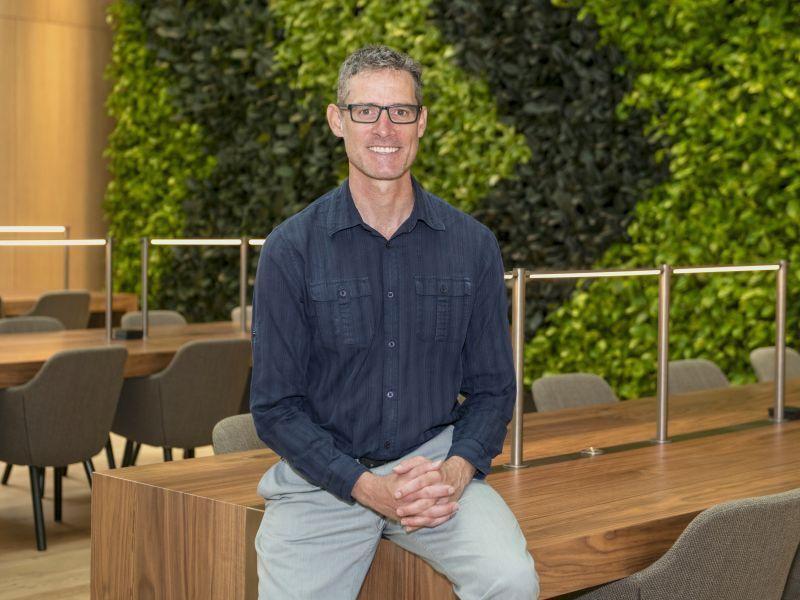
DC microgrids can help reduce energy waste and diversity a buildings power grid. Photo courtesy WZMH
WZMH Architects has teamed up with Ryerson University in an effort to minimize energy losses by using direct energy (DC) microgrids to power various building types.
As Zenon Radewych of WZMH and Jeremy Lytle of Ryerson explained during an email interview with Sustainable Biz Canada, modern electronics, such as computers, phones, and lighting, are inherently DC powered as are the components of a renewable energy system, like batteries and solar PVs (photovoltaics).
Most buildings, however, use an alternating current (AC) grid to integrate DC power sources.
“This results in conversion losses, equaling out to approximately 10-20 per cent, and can lead to a variety of other complications at the grid level,” said Radewych, a principal at WZMH.
Microgrids act as a localized network of electric loads and power sources, explained Lytle, a solar energy specialist and MASc candidate – building science at Ryerson.
A microgrid can also function independently or in conjunction with the larger grid system.
“In our context, a DC microgrid represents an alternative power system in a building where we can power our equipment with various ‘green energy producers (GEPs),’ ” said Lytle, “including solar, wind and even things like exercise bikes and elevators.”
The study being conducted by WZMH and Ryerson includes the use of a community-based DC microgrid where multiple buildings are connected through the grid.
These buildings can include commercial, residential, retail and data centres, among others.
“By combining different types of buildings into the DC microgrid community,” said Radewych, “there are many benefits from the opportunities that relate to recycled energy, or harnessing energy losses.”
Alternative energy sources
Most people have heard of harnessing energy from solar, wind, and rainwater runoff, but not many are aware an exercise bike and electric vehicle chargers can also contribute power to the grid.
“Buildings represent a unique domain for energy harvesting from non-traditional sources, largely due to the volume of human and machine activity that goes on within them,” said Lytle.
“When riding an exercise bike for example, the average person will output 100-150 watts of biomechanical power. In a typical exercise bike, this is dissipated via friction and heat, which our air-conditioners need to compensate for.”
Adding a DC motor to the powertrain of an exercise bike, Lytle explained, can convert the energy into electrical energy, feeding into the microgrid.
Depending on the amount of human activity, each exercise bike can produce enough power to run the lighting in a 300-square-foot office space.
“We believe bikes could be placed on every office floor or within residential units, so employees or residents can not only participate in creating green energy,” said Lytle, “but the bikes provide an opportunity to reduce stress and improve health.”
Electric vehicle charging is considered a controllable load source, where charging time is shifted on any given day to align with periods of peak renewables production and avoid peak load on the AC grid.
“This sort of flexibility can optimize the operation of a microgrid and provide economic benefits to the building owner,” said Radewych.
Diversifying the microgrid
As Radewych explains, WZMH considers there to be three primary sources of energy in its buildings – people, environmental and recyclable.
As previously mentioned, people bring kinetic and thermal energy; the environment can produce wind, solar and geothermal energy; and recyclable sources include artificial lighting, waste heat, machinery vibrations and elevator regeneration, to name a few.
“Our approach to harvesting these energy sources involves exploring innovative materials and technologies which are not typically considered in the building sector,” said Radewych.
“For example, just like solar panels turn light into electricity, piezoelectric materials can convert vibrations and mechanical strain – for example, from people walking – into electricity. Similarly, thermoelectric materials can convert heat flow into electric current.”
Identifying and harvesting the various energy sources a building can produce will ultimately result in a diversified microgrid.
“Our goal is to create as many GEPs (green energy producers) as possible that can easily plug and play into the DC microgrid, eventually empowering people to use these GEPs to create green energy which plugs into the DC microgrid,” said Radewych.
“The end goal is to empower ‘people’ to become green energy producers and to do their part in helping create a greener planet.”
Benefit to occupants
DC microgrids not only add resiliency to a building’s power source, but also stability with relation to cost.
Lytle said solar, wind and batteries are rapidly achieving grid parity in several jurisdictions around North America, which means localized power from these sources will cost the same or less than current utility rates.
“By providing a more efficient integration mechanism for renewables,” he said, “the DC microgrid can enable broader implementation of these cost-effective energy sources, providing access where it may not have been feasible traditionally.”
Lytle added onsite energy sources provide cost certainty, whereas under the current model, utility rates are expected to rise as the power system grows to meet increasing demand.
Other ways a DC microgrid can help lower costs include peak load shaving and demand response, each of which can include economic incentives from the utility.
“By having a DC microgrid that allows the plug and play of various GEPs, such as the energy bikes and small solar panels that people can install on their balconies of a high-rise residential building,” explained Radewych, “people can create their own green energy, feed this green power into the DC microgrid and then receive a rebate on their electrical bill.”
Lytle and Radewych also pointed to the resiliency of a DC microgrid, saying when a building’s functionality depends on a single source of energy, or single point of failure, there is an inherent lack of resilience.
“In a building microgrid, the system’s resilience increases in proportion to the diversity of energy sources,” said Radewych, who used solar, wind, and batteries as examples, depending on weather and availability.
“The more diverse these sources are, the less likely we are to lose them all at any given time. We may not be able to run a factory in a grid outage, but we can ensure the occupants have the essential services they need.”
WZMH
Based in Toronto, WZMH has planned and designed projects in Canada and overseas for more than 50 years.
Encompassing all aspects of the architectural process, WZMH has worked on interiors, master planning and sustainable designs.
Radewych joined WZMH in 1995, becoming a principal of the firm in 2007. With a bachelor of technology in architectural science from Ryerson, he has led some of WZMH’s largest projects in Canada and abroad.









